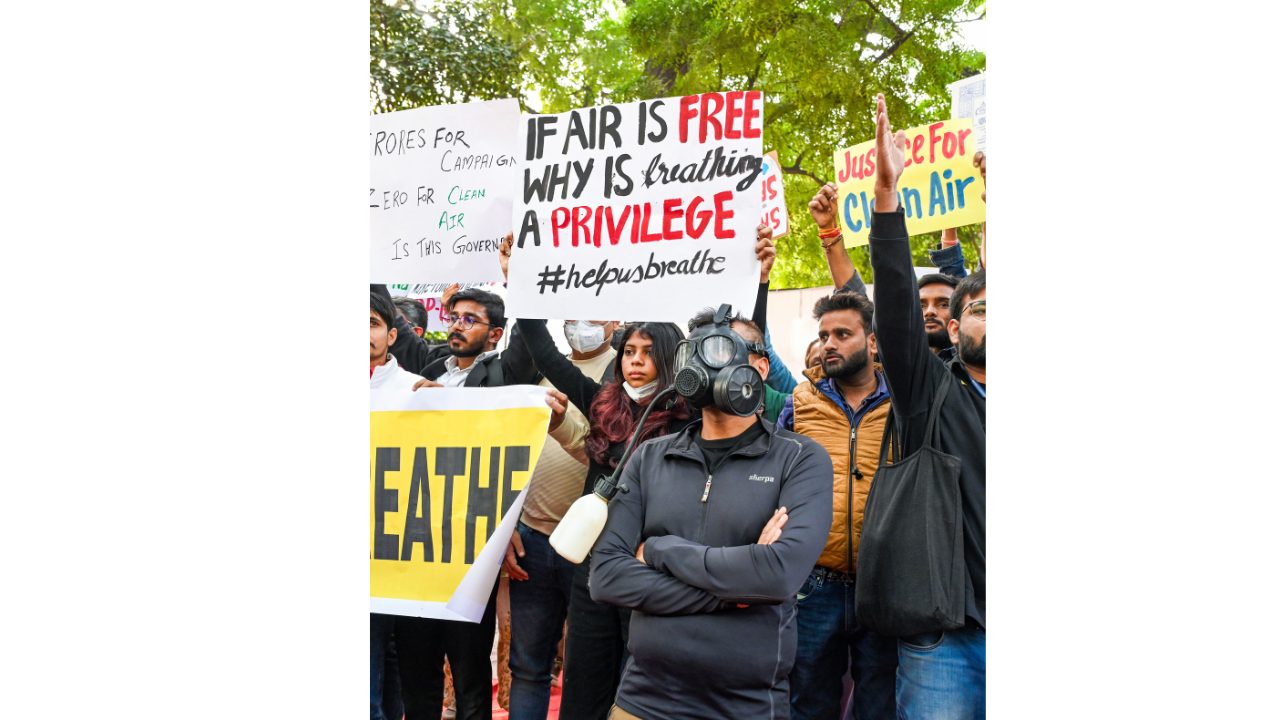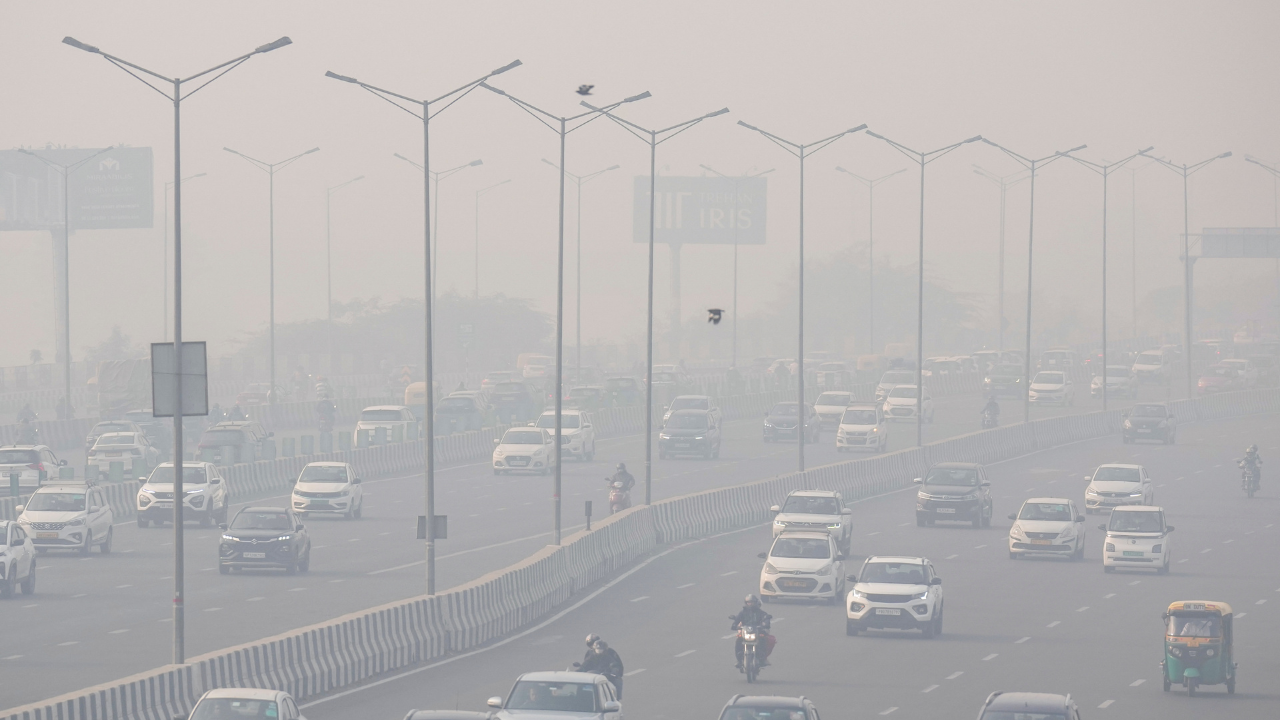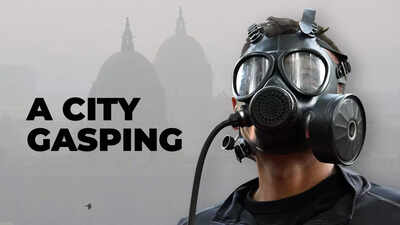Stop playing, running, exercising – and if possible, stop breathing!For millions who live in and around the capital, air is no longer an invisible backdrop to daily life. It has become a persistent health hazard — an omnipresent fog that coats lungs, corrodes hearts, clouds classrooms and wards, and quietly chips away at life expectancy. Winter’s seasonal smog is the headline, but the underlying crisis is year-round: sustained high levels of fine particulate matter and other pollutants that modern medicine and public-health studies now tie to respiratory disease, heart attacks, strokes, neurological damage, and adverse outcomes from pregnancy through old age.Why is there no AQI category over 500?On many winter days, the city’s daily AQI spikes into the ‘very poor’ to ‘severe’ categories, prompting emergency public advisories and activation of the Graded Response Action Plan (GRAP) — a set of restrictions meant to limit emissions on the worst days.
| AQI Category | AQI Range | PM₂.₅ | Associated Health Impacts |
|---|---|---|---|
| 🟩 Good | 0–50 | 0–30 | Minimal impact. |
| 🟨 Satisfactory | 51–100 | 31–60 | May cause minor breathing discomfort to sensitive people. |
| 🟧 Moderately Polluted | 101–200 | 61–90 | May cause breathing discomfort to people with lung disease (e.g., asthma), and discomfort to people with heart disease, children, and older adults. |
| 🟨🟧 Poor | 201–300 | 91–120 | May cause breathing discomfort on prolonged exposure and discomfort to people with heart disease. |
| 🟥 Very Poor | 301–400 | 121–250 | May cause respiratory illness on prolonged exposure. Effects may be more severe for people with lung or heart diseases. |
| 🟥🟥 Severe | 401–500 | 250+ | May cause respiratory impact even on healthy people; serious health effects for people with lung/heart disease. Impacts may occur even with light physical activity. |
Yashasvi Vasistha, 6 min
| AQI Category | AQI Range | PM₂.₅ | Associated Health Impacts |
|---|---|---|---|
| Good | 0–50 | 0–30 | Minimal impact. |
| Satisfactory | 51–100 | 31–60 | May cause minor breathing discomfort to sensitive people. |
| Moderately Polluted | 101–200 | 61–90 | May cause breathing discomfort to people with lung disease (e.g., asthma), and discomfort to people with heart disease, children, and older adults. |
| Poor | 201–300 | 91–120 | May cause breathing discomfort on prolonged exposure and discomfort to people with heart disease. |
| Very Poor | 301–400 | 121–250 | May cause respiratory illness on prolonged exposure. Effects may be more severe for people with lung or heart diseases. |
| Severe | 401–500 | 250+ | May cause respiratory impact even on healthy people; serious health effects for people with lung/heart disease. Impacts may occur even with light physical activity. |
India’s Air Quality Index (AQI) is not capped at 500, but values above that come under the same category of ‘severe’. The reason for the same is reportedly to avoid public panic and because the government believes that health impact is similar, if not same, at that level.International platforms like IQAir use different models without an upper limit and can display much higher values for the same pollution levels. India’s official index is calculated based on reference-grade monitors, while other platforms may use lower-cost sensors that can have different accuracy and calculation methods. Biology of harm: How polluted air attacks the bodyAir pollution is not a single poison but a mixture: fine particulates (PM2.5 and PM10), nitrogen oxides, sulfur dioxide, ozone, carbon monoxide, and complex organic compounds. Of these, PM2.5 — particulate matter smaller than 2.5 micrometres — is the most medically alarming.These particles are small enough to evade upper-airway defenses, lodge deep in the alveoli, cross into the bloodstream and travel to other organs, provoking inflammation, oxidative stress, and systemic damage.Over time, that damage accumulates; it raises the risk for heart disease, stroke, chronic obstructive pulmonary disease (COPD), lung cancer, adverse birth outcomes and an expanding list of neurological and metabolic conditions.Dr. Kuldeep Kumar Grover, critical care and pulmonology head, CK Birla Hospital in Gurugram, explains how the current levels of air pollution in northern India significantly increase the risk of serious medical conditions such as asthma, diabetes, heart attacks, strokes, and chronic obstructive pulmonary disease (COPD). “Exposure to asbestos over time raises the possibility of several cancers, including lung, bladder, and breast cancer, even for nonsmokers.””In the short term, people may experience headaches, more frequent respiratory infections, irritation of the eyes and throat, and breathing difficulties. Toxic air is estimated to reduce life expectancy in Delhi and the surrounding area by approximately eight years,” he added.

Residents protest the conditions they are being forced to live in.
Delhi resident Aashish Saxena has been experiencing the constant discomfort of breathing toxins. “I am sure I have lost atleast 10 years of my life because of Delhi’s toxic air. Apart from constantly coughing, I have a permanent headache throughout winter because of pollution. Since offices refuse to entertain WFH option, we are forced to commute through the deadly smog, which takes a severe toll on our health,” he says.Clinically, the short-term effects are visible in emergency rooms and outpatient clinics: spikes in asthma attacks, bronchitis, laryngitis, allergic conjunctivitis and chest pain. Longer term, sustained exposure shortens life expectancy and increases chronic disease prevalence across cohorts — especially among children, the elderly, pregnant women, and people with pre-existing conditions.Air pollution is as much a cardiovascular risk as it is a respiratory one. Fine particles and gaseous pollutants increase blood coagulability, raise blood pressure, and accelerate atherosclerosis, which translates clinically into more heart attacks and strokes on high-pollution days and higher baseline cardiovascular mortality overall.Big concern for pregnant mothers, babies and childrenWhat happens when expectant mothers inhale polluted air?”High pollution levels during pregnancy are connected with complications such as low birth weight, premature delivery, and stunted foetal development. The long-term health of the mother and child may be adversely affected by these effects,” explained Dr Grover.Children are disproportionately harmed. They breathe faster than adults, inhale more air per bodyweight, and their lungs and immune systems are still developing — which makes the same pollution dose more damaging. “As their lungs and immune systems are still developing, young children and infants are especially prone to the adverse effects of polluted air. worsening of asthma, recurrent infections, slower lung growth, and even impacts on brain development may arise from exposure,” he said. Pediatric clinics in Delhi report children with recurring cough, wheeze, reduced exercise tolerance, and increased hospitalizations for acute lower respiratory infections. The lifelong consequences can include reduced maximal lung function, higher lifetime risk of chronic respiratory disease, and neurodevelopmental harms that affect learning and behavior.Not a dystopian movie scene, not Chernobyl – this is Delhi

Delhi breathes very poor air on 16 of 21 days in November.
Manya Jain, an NCR resident, has developed breathing issues. “After 21 years in Delhi, I’ve lived through post-Diwali pollution every single year, but it never felt like it was hitting my body directly. This year is different — I’m genuinely struggling to breathe. I don’t step outside without a mask, and even then, the air feels toxic. I genuinely wish I could just leave Delhi for a few weeks,” she said.Hospitals across the capital have reported surges in pollution-linked cases. According to recent hospital and academic alerts, outpatient numbers for respiratory and related conditions rise sharply in the weeks after critical pollution episodes.Intensive-care units report more ventilator use and complicated recoveries from routine viral illnesses — the body’s capacity to heal appears reduced when a background of continuous particulate and chemical insult persists.Who’s most at risk — and why the poor suffer mostVulnerability is both biological and socioeconomic. The elderly, infants, people with chronic illness and pregnant women are physiologically more susceptible. But social factors compound exposure: low-income families often live in areas with higher traffic congestion or informal industries, have less access to mitigation (sealed homes, purifiers), and more often use biomass or polluting fuels for cooking and heating.Consequently, the poorest bear the highest health burden — even though the wealthier suffer too (through private costs such as purifiers, healthcare, lost productivity, or migration). The unequal burden makes clean-air policy also an issue of equity and justice.Personal protection: What can we do?

At an individual level, N-95/FFP2 masks (properly worn) reduce inhaled particulate exposure, air purifiers lower indoor PM levels, and limiting outdoor activity on high-AQI days reduces risk.Here are doctor’s recommendations during high AQI readings:• Monitor local Air Quality Index (AQI) daily and avoid outdoor activities when levels are high • Stay indoors with windows closed during peak pollution hours • Use air purifiers, especially in bedrooms and living spaces • Avoid indoor sources of pollution such as tobacco smoke and incense • Maintain good indoor ventilation when outdoor air quality improves • Ensure children, elderly, and those with chronic illnesses use special caution during high-pollution periods But these measures have their own challenges:- mask fit and compliance vary- purifiers work only in sealed rooms- many workers (construction, street vendors, drivers) cannot avoid outdoor exposureExperts emphasise that while personal protective measures are sensible stopgaps, only systemic emission control reduces risk for whole populations.Delhi’s smog season has become an annual indictment: years of obvious causes, predictable weather patterns, and policy options that are known, yet action has been partial and often temporary. The science is clear, the clinics are ringing the bell, and the data is unambiguous: breathing in Delhi, for too many, is now a risk that begins before birth and clouds life’s final years. Go to Source



